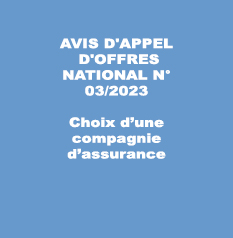| Programme annuel & rapport de suivi technique |
-

Rapport d'activités 2023
-

Programmes Techniques 2024
|
| Géocatalogue |

|
| Appels d'Offres |
-

ACQUISITION DES TICKETS RESTAURANT POUR LE PERSONNEL DE L’ONM
-

CHOIX D’UNE COMPAGNIE D’ASSURANCE
-

ACQUISITION ET MISE EN ŒUVRE D’UN PROGICIEL DE GESTION INTEGRE
|
|
Investir en Tunisie |


|
|
|
|
|
::
Documentation and Editions
>>
Research library
|
| |
|
[
Search by author
]
[
Search keyword
]
[
Search by index
]
[
Search by category
]
|
title of the reference :
|
Geochemistry of early mesozoic basalts from Tunisia.
|
|
Publication Date:
|
1983
|
|
Author :
|
Kurtz Jeffrey P.
|
|
Catalogue type :
|
Livre
|
|
Catalogue reference :
|
Vol.1 (GBR) J. Afr. earth sci. Vol.1 Geochemistry of early mesozoic basalts from Tunisia. Géochimie des basaltes du Mésozoïque inférieur de Tunisie. The late Triassic-Liassic evaporites of the tunisian central Atlas commonly contain fault blocks of layered or brecciated metabasalts and tuffs. The metabasalts show the effetcs of two alteration episodes : (1)a greenschist facies, spilic assemblage composed of albite, chlorite, actinolite, epidote, calcite, quartz and leucoxene: and (2)a later, potassic alteration assemblage composed of potassium-feldspar, sericite, calcite, chlorite and hematite. The primary assemblage of plagioglase + titanomagnetite + ophitic pyroxene ? olivine can be identified from crystal pseudomorphs and rare relict crystals. Based on the abundances and interrelations of immobile elements (Ti, P, Y, Zr and Cr), the metabasalts are shown to be tholeiitic basalts with slight alkaline tendencies. Based upon these features, their field relations, and the extensive occurence of Triassic-Liassic tholeiites accross the northwest african margin, the tunisian metabasalts are considered to be remnants of a widespread basalt province associated with breakup of Pangea in the Early Jurassic bibliogr. basalte ; métabasalte ; dolérite ; faciès schiste vert ; paragenèse ; spilitisation ; pseudomorphose ; ophite ; altération chimique ; analyse majeurs ; analyse mineurs ; abondance géochimique ; absorption atomique ; spectrométrie ; fluorescence RX ; Trias ; Jurassique inférieur ; diagramme géochimique ; basalte tholeitique ; Tunisie ; Tunisie Nord Orientale ; Tunisie Nord Occidentale ; Tunisie Centrale ; Koudiat el Mrira ; Le Kef ; J. Argoub el Alhmar ; Bizerte ; Atlas Tunisien Central Kurtz Jeffrey P. Géochimie
|
|
Indexation decimale :
|
Géochimie
|
|
Keywords :
|
basalte ; métabasalte ; dolérite ; faciès schiste vert ; paragenèse ; spilitisation ; pseudomorphose ; ophite ; altération chimique ; analyse majeurs ; analyse mineurs ; abondance géochimique ; absorption atomique ; spectrométrie ; fluorescence RX ; Trias ; Jurassique inférieur ; diagramme géochimique ; basalte tholeitique ; Tunisie ; Tunisie Nord Orientale ; Tunisie Nord Occidentale ; Tunisie Centrale ; Koudiat el Mrira ; Le Kef ; J. Argoub el Alhmar ; Bizerte ; Atlas Tunisien Central
|
|
Summary :
|
The late Triassic-Liassic evaporites of the tunisian central Atlas commonly contain fault blocks of layered or brecciated metabasalts and tuffs. The metabasalts show the effetcs of two alteration episodes : (1)a greenschist facies, spilic assemblage composed of albite, chlorite, actinolite, epidote, calcite, quartz and leucoxene: and (2)a later, potassic alteration assemblage composed of potassium-feldspar, sericite, calcite, chlorite and hematite. The primary assemblage of plagioglase + titanomagnetite + ophitic pyroxene ? olivine can be identified from crystal pseudomorphs and rare relict crystals. Based on the abundances and interrelations of immobile elements (Ti, P, Y, Zr and Cr), the metabasalts are shown to be tholeiitic basalts with slight alkaline tendencies. Based upon these features, their field relations, and the extensive occurence of Triassic-Liassic tholeiites accross the northwest african margin, the tunisian metabasalts are considered to be remnants of a widespread basalt province associated with breakup of Pangea in the Early Jurassic
|
|
Exemplaries :
|
TU1419
|
|
|
|
|
|
|
|



